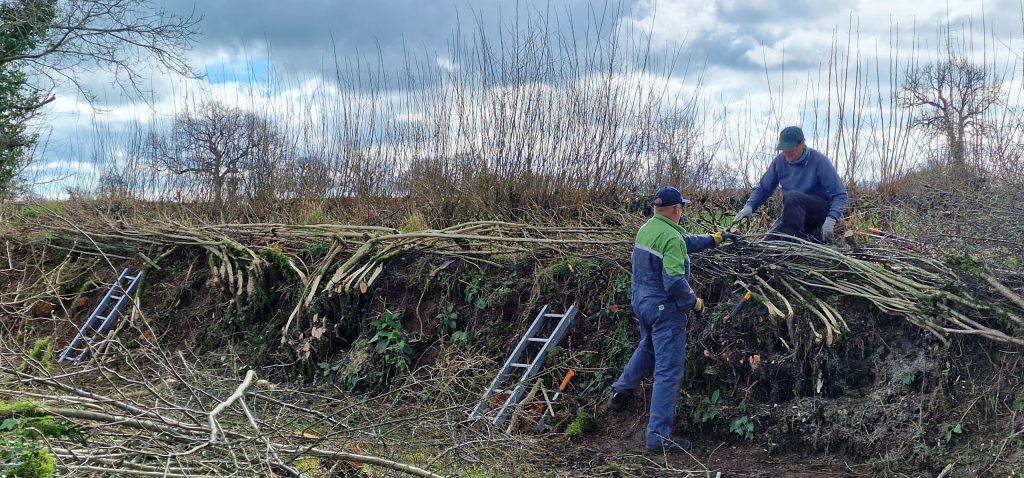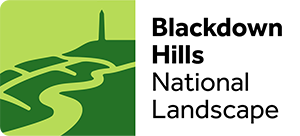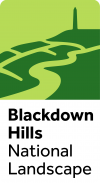Chapter 8: Delivery and monitoring

Blackdown Hills National Landscape Management Plan 2025-2030
Chapter 8: Delivery and monitoring
In this chapter:

8.1 Implementation
All those that have an active interest and role in the management of the Blackdown Hills landscape and in supporting the communities that live and work within it have a role in implementing the Management Plan through individual action as well as partnership working. This includes parish councils, landowners and managers, voluntary organisations and interest groups, local authorities, statutory agencies, advisory bodies and government departments – whether individually or as part of other partnerships. The need for, and importance of, partnership working and community engagement continues to be imperative to enable new and innovative working relationships to deliver the priorities of the Management Plan and draw down new sources of funding that may become available.
By helping to implement this plan, government, local authorities, public bodies and other ‘relevant authorities’ will be contributing to their Countryside and Rights of Way Act Section 85 duty to seek to further the purpose of conserving and enhancing the natural beauty of the Blackdown Hills National Landscape. It is therefore important that the strategies, plans and action plans of key local, regional and national authorities, agencies and organisations take account of and reflect the vision, objectives and policies of this plan.
Collaboration and working together with others to achieve success underscores all National Landscape Partnership work. A key function of this plan is to encourage coordinated action in the Blackdown Hills and ensure an integrated policy context. Sitting across two counties, activities in the Blackdown Hills are very often delivered by several different organisations – or different parts of the same organisation – based on administrative boundaries. This can lead to local issues being marginalised, different approaches being taken in neighbouring areas, and divergence of policy, for instance.
The National Landscape Partnership is made up of organisations and interest groups that work together towards achieving the vision through delivering the aims, objectives and policies of this Management Plan. Policy direction and implementation of the Management Plan is guided by the Partnership Management Group. This is comprised of appointed representatives from the local authorities and several representatives elected from the statutory and non-statutory organisations, local groups and parish councils within the Blackdown Hills. The Partnership is supported by a small staff team, and it is enormously valuable that the Partnership can call on topic-specific working groups and forums drawn from the local community, interest groups, businesses, and the statutory and non-statutory agencies to coordinate action and help to deliver projects that conserve and enhance the Blackdown Hills.
One of the most important roles of the Blackdown Hills National Landscape Partnership therefore, supported by other Blackdown Hills-wide groups such as the Parish Network, is to coordinate information and facilitate action across administrative boundaries to ensure that organisations collectively can meet the needs of the environment, landscape and communities of the Blackdown Hills. This will support local authorities and other public bodies in their ‘duty to co-operate’, and help to develop integrated, effective collaboration at a landscape-scale through, for example, the Local Nature Partnerships and Catchment Partnerships.
A recurring message arising from consultation is the need for the Blackdown Hills National Landscape Partnership to do more to communicate and promote the purpose of designation and to promote understanding and appreciation of the National Landscape and its special qualities. The continued protection and enhancement of the Blackdown Hills’ landscape, biodiversity and historic assets can only be achieved by successful communication of their significance and value to a variety of audiences, from landowners, local communities and businesses to local authority officers and infrastructure providers.
8.2 Monitoring and evaluation
We can only achieve the purpose of conserving and enhancing the Blackdown Hills’ natural beauty and promote understanding and enjoyment of the special qualities if we understand what makes the area special, the issues and challenges facing those special qualities, and are able to identify the opportunities for celebrating, conserving and enhancing them, and telling their stories.
We also need to ensure that decisions are made based on the best available evidence so that we can make the most of the funding and resources available. It is therefore important to ensure that there are adequate mechanisms in place for monitoring, research and reporting.
A role of the Blackdown Hills National Landscape Partnership is to collate, monitor and evaluate the actions that happen from the implementation of this plan to demonstrate where management actions are making a difference on the ground – but without the monitoring process being overly burdensome.
There are two main strands to this monitoring:
National Protected Landscapes Targets and Outcomes Framework
As set out throughout this plan the framework defines the contribution that Protected Landscapes (as areas) should make to national targets and certain Environmental Improvement Plan outcomes. The Framework contains 10 targets. Each target is accompanied by an indicator which will measure progress towards it and its related outcome. Natural England will evaluate overall progress towards the targets and outcomes in the Framework. The Blackdown Hills National Landscape Partnership can question and challenge the national position when necessary, where data anomalies and gaps are apparent from the picture on the ground locally.
Management reporting
Qualitative monitoring of action is relatively straightforward; the Partnership’s Annual Review is the mechanism for reporting on implementing the Management Plan and the Blackdown Hills National Landscape website highlights a range of project work, often with its own monitoring requirements. In addition, partners regularly report to the Blackdown Hills National Landscape Partnership Management Group. This is the opportunity to highlight the work they are doing throughout the year. The Blackdown Hills National Landscape Partnership will additionally look to develop a programme to identify appropriate, effective and proportionate mechanisms to measure or judge progress towards local priorities that may not be covered elsewhere or require local knowledge and research (could be related to diversity and inclusion and engagement, or specific wildlife species, or hedgerows, for example), and will seek to work with wider partners to secure a long-term programme of monitoring along with appropriate resources.
8.3 Strategic Delivery Plan
The Strategic Delivery Plan is a key part of the Management Plan and can be found in the appendices. It outlines the strategic high-level actions over the five-year period required to deliver the Management Plan’s ambitions across Place, People, Nature and Climate, based on the priorities for action set out in earlier sections of this plan.
It has been included separately in the appendices to enable it to be updated more readily through the plan period.




